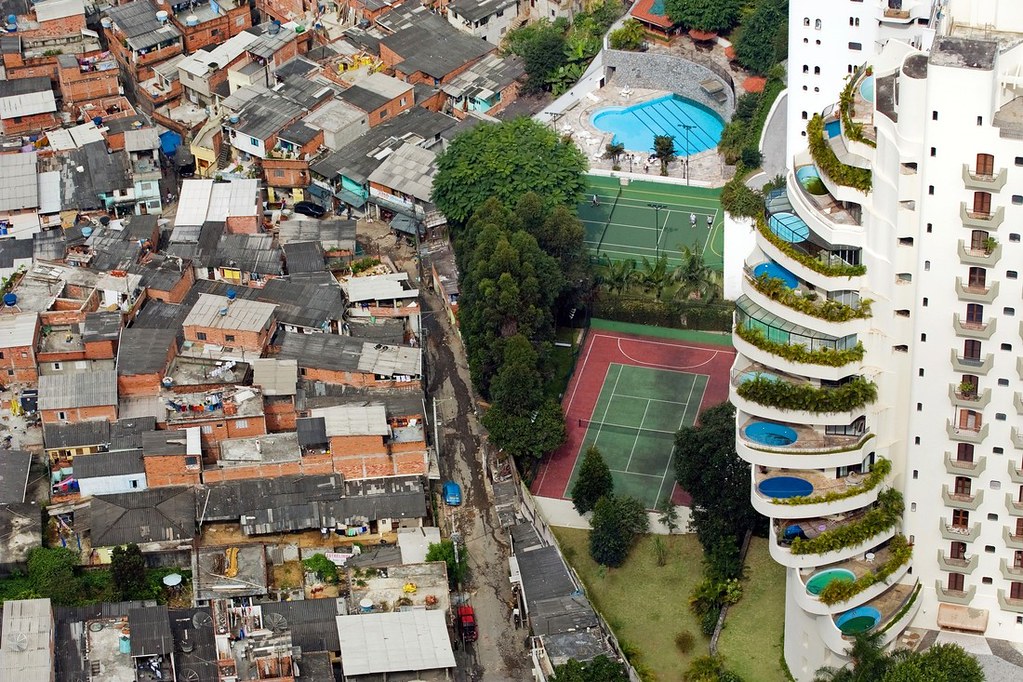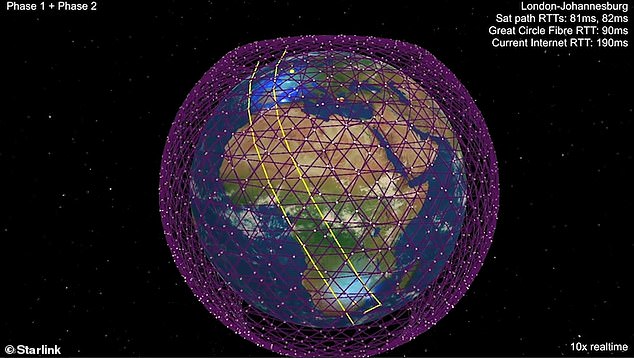The Right to the Network: on capitalism and next generation networks
by Peter Bloom
Long before I became involved in telecommunications, I majored in Urban Studies at university where I was introduced to the writings of David Harvey, a marxist geographer. Over the past few months, as I have been digging into what is going on around 5G and how it will potentially reshape society, I keep coming back to an essay by Harvey that I read years ago called “The Right to the City”. Simply, the essay is about how people shape the cities they live in and, in turn, how the city shapes how those people live and interact. Ultimately, the essay argues that this process of making and remaking cities is a human right that all should be able to exercise.
“the question of what kind of city we want cannot be divorced from the question of what kind of people we want to be, what kinds of social relations we seek, what relations to nature we cherish, what style of daily life we desire, what kinds of technologies we deem appropriate, what aesthetic values we hold.”
The concept of the ‘right to the city’ has gained increasing traction in relation to our understanding of our physical world, one that shapes and is shaped by power and technology. This theoretical approach that links our social relations with infrastructure, power and space seems a perfect fit with the inquiries I have been making into next-generation networks. Our human right to shape cities, the built environment in which we live, is affected by social, political and economic considerations, as well as historical forces, as Harvey points out. The same applies to our telecommunications networks, as integral parts of our built environment. In exploring how telecommunications fit into the picture, I want to focus in particular on the central thesis of Harvey’s piece — that one very important factor in shaping and re-shaping cities is their function as absorbents of surplus capital.
So what the hell does that mean? To keep things simple, in a capitalist system, such as the one we live under, successful firms and businesses create a surplus. In other words, they invest money in some productive venture and that, thanks to how capitalism works (mainly the exploitation of labor), leads to them having more money. This money needs to be reinvested somehow for the business to remain profitable, keep its market share, and grow, which is crucial under capitalism. When combining all the surpluses around the world, we are talking about lots and lots of money — so much that there isn’t always enough capacity to absorb it through reinvestment. And if capitalism hates anything, it’s stagnation. Think of it like a shark; staying still is the same as dying.

In “The Right to the City”, Harvey explains how urbanization has historically acted as an absorbent for the surplus that capitalists are perpetually creating. He also provides a critique of how these processes alter social relations and create inequality. Harvey looks at numerous examples, such as how Emperor Napolean III and Baron Haussmann, as a way to resolve the socioeconomic crisis of 1848, undertook a massive redesign of Paris that employed huge amounts of capital and huge amounts of labor, thereby absorbing much of the surplus and momentarily stabilizing the economy and the society. The new Paris became a center of consumption and pleasure, which also helped to suck up quite a bit of the excess but also led to major social upheaval by those who felt left out of this urban vision, culminating in the establishment of the Paris Commune. Other examples include polemic urban planner Robert Moses’ massive redesign of the New York City metropolitan area after World War II, which also led to a new way of living and consuming: the suburbs. It also fostered a hollowing-out of the urban core and subsequent revolt by poor minorities who were negatively impacted. Fast forward a bit more, and it can be argued that we are emerging from a long global urbanization boom that started in the 1980’s and that ultimately led to the housing crisis of 2008, one in which fancy high-rises were erected all around the world, while millions of impoverished people fled rural areas for urban slums.

Let’s try and understand how these lessons might apply to how and why next-generation networks are being built. Communications networks have always been a central feature of both urban geography and capital accumulation, and the new generation of networks, things like 5G and low-earth orbit satellite constellations are no different. Certainly, the sheer amount of investment required to build out new 5G networks is staggering. For 5G alone, estimates are in the trillions of dollars, globally. Once these networks are built, as their promoters love to claim, new and hitherto unknown ways to spend and make money will materialize. To think of it through the lens provided by Harvey, society is going to be remade, at least partly, in the image of these networks as a way to more smoothly deal with the surplus capital absorption problem. Like previous generations of network technology, going back to the telegraph, next-generation networks will remake urban spaces and transform social relations, and the impact of this communications technology on economies, societies, and spaces will be uneven – creating new forms of inequality and reinforcing some existing ones. “The Right to the City” has something important to say about this phenomenon:
“Surplus absorption through urban transformation has an even darker aspect. It has entailed repeated bouts of urban restructuring through “creative destruction.” This nearly always has a class dimension since it is usually the poor, the underprivileged and those marginalized from political power that suffer first and foremost from this process.”
For the next 10 years, the roll-out of 5G networks and satellite constellations will help deal with this central issue of capitalism: where to put all that money! According to promoters, the promise of ultra-fast, reliable, ubiquitous interconnection will open up new business realms or “verticals”. Things like autonomous vehicles, industrial automation, the Internet of Things, virtual and augmented reality, and so on. And while there will be winners in all of this, it will also create a whole class of “losers”. There are already some examples. Take the flexibilization of labor embodied by the gig economy, which will only get worse as many of these jobs and tasks are taken over by robots and Artificial Intelligence. In the meantime, it is not hard to show the role new networks are playing in absorbing capital surplus, which is, in effect, a way to explain why they will happen. Look no further than how the mobile telecommunications industry group talks about their plans:
Starting from the very ambitious technical specifications for 5G and low-earth orbit satellite constellations and extending to the amount of bandwidth and services network users will have at their disposal, excess is king. This is not a normative statement. I do not pretend to know what people need or want. But the fact is, what is being put forward as the goal for next-generation networks is an amount of capacity that is simply impossible to fully use. As I stated in a previous piece, in the most densely populated city on Earth, a properly spec’d 5G network would have the capacity to connect 43 devices per person. Additionally, the speeds being proposed are quite substantial, to the point of being overkill. What is one actually going to do with 1 Gigabit per second of download speed on their mobile device? For perspective, 1 gigabit per second is 40 times more velocity than the 25 megabits per second you need to stream video at Ultra HD quality.
And the bacchanalia of connectivity doesn’t stop here. I get that there is some “future-proofing” going on, yet we are already starting to hear about 6G, and it is unlikely the mobile telecom sector redesign that happens every decade like clockwork has ended with 5G. In this sense, the telecom sector is an immensely useful sponge for surplus capital, as every ten years they completely reimagine and redeploy their networks, increasing capacity and increasing demand.
The new satellite constellations are perhaps an even more striking example, one that pushes the boundaries into, well, outer-space. There are now no fewer than 4 massive corporations spending billions of dollars on research and development, lobbying and eventual deployment of thousands upon thousands of small satellites that will blanket the globe at very low orbits. SpaceX’s project Starlink alone is proposing to launch 12 thousand satellites! There are only about 5000 total satellites in orbit now. Elon Musk, the founder and owner of SpaceX has stated they only need 1 thousand satellites to be commercially viable.

For our purposes, the troubling term from the GSMA director above is “hyper-connectivity”. Hyper means over, exceedingly, or to excess. So an excess of connectivity, more than anyone needs or can use. Herein lies a connection to the surplus issue we have been discussing: we need to talk about how these plans to implement next generation networks involve overbuilding the networks – beyond what we might want or need. For those of us with access to these networks, each user will simply be forced to purchase services beyond what they can use, paying the price (literally) for this odd contradiction at the heart of capitalism. For those of us who are still un- or under-connected to communications networks (as nearly 50% of the world remains today), this next gen technology will create an even more gaping digital divide. As these new networks begin to appear, and as I have previously noted, the excess they will provide to those living within their coverage areas is perhaps directly related to stagnation and lack of coverage for many others. So what to do? Again, “The Right to the City”:
“If [the urban dispossessed] did somehow come together, then what should they demand? The answer to the last question is simple enough in principle: greater democratic control over the production and use of the surplus. Since the urban process is a major channel of use, then the right to the city is constituted by establishing democratic control over the deployment of the surpluses through urbanization.”
We need to do something similar in regards to networks. Frustratingly, most national constitutions and policies and the UN already recognize access to information and communication as a fundamental human right. The problem is that the details around how people can actually exercise their rights are vague or non-existent.
There are two related strategies we should employ. One is pushing for better policies and regulations that force governments and companies to invest in infrastructure in un-connected places, open and fair access to spectrum, interconnection and rights of way for community networks and SME’s, and effective use of and access to the incredible amounts of money salted away in Universal Service Funds. Many of us are working on this and have been for a while, but the going is slow and the barriers many. Our movement should take inspiration from the myriad of spatial, urban and land rights organizations working to end homelessness and gentrification, build affordable housing and even resist the imposition of “smart” city technology.
The other option amounts to exercising our “Right to the Network” through civil disobedience: building our own networks, laws and regulations be damned. A squatters movement equivalent for community networks. This strategy requires organization, and the capacity for self-defense and self-funding. In my opinion and experience with Rhizomatica, the latter strategy is the most effective for kick-starting the first strategy and also means people have networks and access in the meantime. Unfortunately, and due to the processes of surplus absorption and its effect on infrastructures and spaces described above, many communities are so debilitated and fragmented, that it is hard to imagine how they could come together in this way.
I hope that this article has been helpful in terms of understanding the “why” of 5G and some of the other new and exotic network forms on the horizon (literally) and how there are larger global forces at work, ones built into the way capitalism reproduces itself, that we need to address. This deeper inquiry into the political economy of next generation networks can at times be confusing and disheartening, but is nevertheless crucial in order to understand what we might be able to do about solving the digital divide and challenging the eminent yet unequal hyper-connected society. So perhaps, upon reflection, there is something we need to do first: dismantle capitalism. To do so we have to rethink and reposition our work and activism, as no amount of technical wizardry or policy fixes, or even community networks, will really solve the issue of digital inequality in this new day and age.
My sincerest thanks to Dr. Kira Allmann for her invaluable comments and edits.